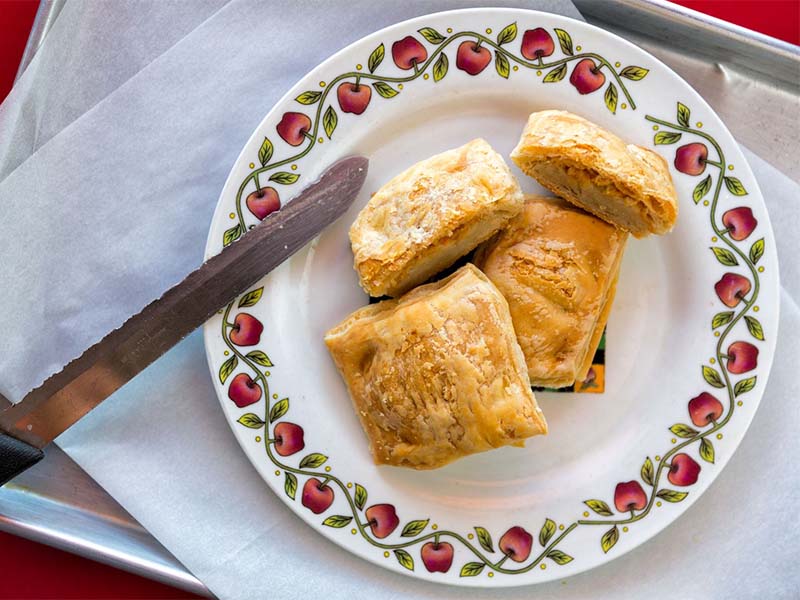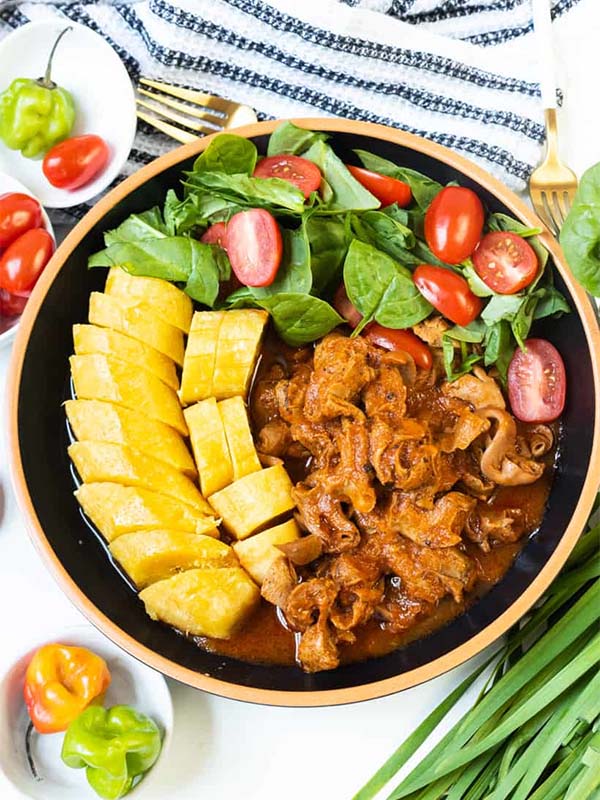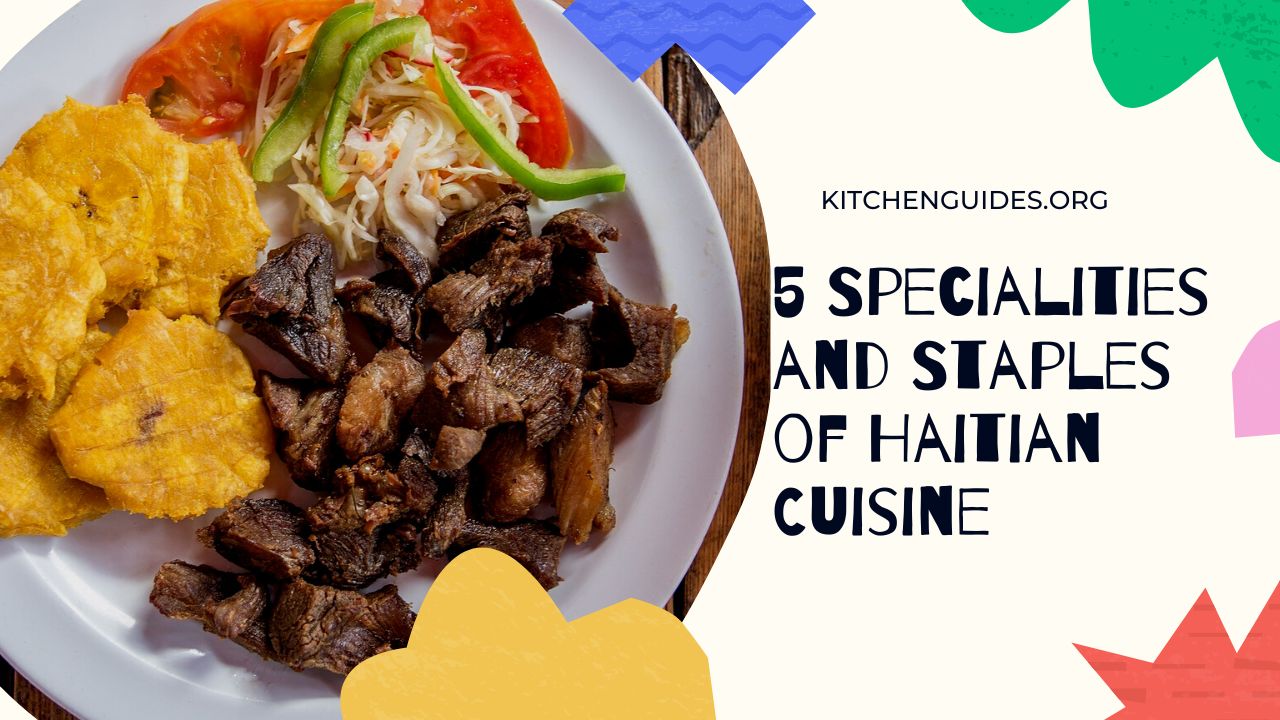Haitian food is a very unique and diversified gastronomic experience. Contrary to common belief, Haitian food isn’t hot, but it’s full of palate-pleasing tastes, which we are confident you will love.
Haitian food is based on Haitian cooking traditions. It’s a Creole food that combines the French, African, indigenous Taino, Arab, and Spanish culinary influences that influenced the western section of Hispaniola’s island. Haitian food is related to “criollo” cooking and the Latin Caribbean, although it differs in crucial respects from its equivalents in the area.
The tastes are intense and spicy, with French and African influences and unique adaptations from indigenous Tanio and Spanish methods. Due to years of Arab migration and the establishment of various companies, Levantine effects have found their way into mainstream society. These cuisines have merged into Haitian food after years of modification.
Cuisine And Customs Of Haiti
Haiti occupies the western portion of Hispaniola’s island. Three primary mountain ranges spread throughout the nation, divided by vast plains, giving the country its name, Haitian, which means mountainous. Cocoa, coffee, coconuts, avocados, oranges, limes, and mangoes thrive in the wild. Coffee and sugar are the most significant commercial crops.
Traditional Haitian food was shaped by France, Spain, the African continent, and subsequently the US. Even though Haitian food is mainly based on French and Creole culinary techniques, numerous other countries have seized control of Haiti throughout the years, bringing food and ideas from their homelands.
In 1804, after gaining independence, Haiti became the New World’s first African-American nation. However, French dominance is still visible in current Haitian society, especially in the widespread use of the French and contributions to this country’s cuisine. Cheeses, sweets, and pieces of bread from France are widely available at local stores and markets.
In general, starch staples like yams, rice, millet, corn, and beans make up most of the regular Haitian diet. Seafood and meat of all kinds are consumed, but only the more affluent inhabitants can buy them.
Spice is utilized judiciously and as the side dish, such as in Piklis, a braised cabbage dish with scotch and carrot in vinegar bonnet pepper. Additionally, epis is a ground onion, black pepper, parsley, garlic, and thyme combination commonly used to marinade meat.
Every morning, Haitians, like us, wake up to a morning coffee, which is always followed by peanut butter or butter and bread. Riz et Pois, the country’s traditional beans and rice, are provided as the main dish at midday to give vital carbs to field laborers. A dish of Viv — cooked plantain with other boiled roots as well as tubers served with such a meat meal — is frequently served before it.
A gratin is frequently served during Sunday lunch, a tribute to the French heritage once more. As a side meal, pasta gratin (cheese and macaroni!) is widespread. Sunday would be the day that you could have some free time for a tasty dessert.
Dinners are usually modest affairs, consisting of a bowl of soup or porridge. Fried plantains, griot, and barbequed chicken are among the dishes available. People buy Fritaille from street sellers equally as frequently.
In Haiti’s Caribbean environment, tropical fruits, including avocados, pineapples, coconuts, mangoes, and guava. Fresh fruit is also a popular snack, and for a real sugar rush, many choose juicy sugarcane sticks that are ready to eat.
Fruit juices are frequently made from fresh fruits. If you don’t provide fruit soda or fruit juice with a special dinner for guests, it’s just not considered complete. A cocktail is served either after or before dinner.
The Five Specialities And Staples Of Haitian Food
Haitian cuisine offers a taste of exotic food with its array of spices and combinations, including ginger, lemongrass, mango chutney, plantains, and sweet potatoes.
The Haitian dishes are a fusion of French colonial influences with African and Caribbean flavors. The rural areas especially have many traditional dishes, including griot-style oxtail soup, pikliz, pied de Cochon, and savory fried plantain.
And there are the Five Specialities And Staples Of Haitian Food: Fritay, Pate, Soup Joumou, Diri Ak Djon Djon, and Lambi.
Fritay

Haitian cuisine is a diverse blend of flavors and influences from France, Africa, the Caribbean, and the United States. One dish that features key ingredients from Haiti is Fritay – a combination of fried pork pieces, eggs, bacon, tomatoes, onions, peas, and diced carrots. This dish tastes great as a breakfast or as an evening meal.
Fritay is known by many different names in different regions of Haiti. It goes by the name “Poulet Creole” in some areas, while it may be called “Jacquot Pouleng” or other names in other parts of the country and abroad.
Fritay could be made in several ways, but typically it starts with the frying of diced pork(or goat or beef) in oil and lard. The ingredients for Fritay can vary from region to region depending on what is plentiful at the time – peppers and garlic may be added or omitted depending on preference. Other variations include the addition of onions, celery, and other components.
A signature component to Fritay is “Fricassee” which refers to the sauce created when all the ingredients are fried together in oil or lard. The meats or chickens are generally fried first before adding any vegetables or spices. It’s essential to simmer until reduced, and there is a lot of sauce to make sure it cooks thoroughly.
Fritay is usually served alongside white rice and pikliz, a Haitian condiment that contains a mixture of pickled cabbage, carrots, hot peppers, and onions in vinegar or lime juice.
Pate

Pate’s cuisine results from blending Haitian and Latin American spices to create a genuinely unique fusion! This delicious food has an authentic taste that can’t be found elsewhere. They have everything from tasty steamed plantains to mouth-watering pate, so you’re sure to find something you love.
Haitian cuisine includes dishes that are served with diverse types of cooking traditions. One of the most popular Haitian dishes is pate, which is made out of ground lamb, pork, onion, salt, pepper, thyme, nutmeg, eggs, and butter.
Pate can be eaten on its own or with bread. There are only a few spices used in this dish to make it simpler to cook. Some locals will put pate inside pieces of bread before frying them. Pate is also served as a side dish with other Haitian dishes.
Pate can be prepared in different ways. Some people will place the mixture of all ingredients inside the blender to make the pate smooth, while others will use a mortar and pestle to grind everything together. The traditional way is always to use a mortar and pestle.
Initially, the pate was made out of the meat of a lamb’s head. This dish has gained popularity in Haiti and is now enjoyed by many locals daily for lunch or dinner. Pate is widely available in Haitian restaurants that serve local dishes.
The pate consists of cooked rice, vegetables, and meat, usually some sort of fish or seafood. Sometimes you’ll see other ingredients such as cooked crawfish or shrimp added into the mix with peppers or other vegetables.
You can also add in some spices when cooking the pate to help give it a bit of flavor. This is usually done when making it at home, but you can also get creative when eating out.
Soup Joumou

In January 1804, Haiti became the first independent Black republic in the American continent and the second country in the American continent to win freedom from European domination. After a protracted, bloody slave uprising, Haiti gained its independence, the first victory since the trans-Atlantic slave labor began over two centuries before.
Many Haitians recall stories about a pumpkin soup that the French conquerors liked but that slaves were forbidden to eat. According to other reports, slaves were forbidden from even handling the pumpkin that was used to create it.
Soup Joumou of Haitian cuisine is a cream-based soup with vegetables and meat. The dish shares few similarities with the more popular Gaspacho soup. Soup Joumou of Haitian cuisine can be traced back to African recipes that were brought over to Haiti by enslaved Africans.
The three-ingredient soup has its origins in Africa, where it was made from cassava leaves. In addition to vegetables such as pumpkin and meat like beef or chicken, other ingredients make up the dish’s savory flavors, including eggs, celery, garlic, and onion, which form part of the seasoning for the dish.
The ingredients for Soup Joumou of Haitian cuisine can be purchased at local groceries and markets. The vegetables and meat must first be chopped before frying them in a pot with butter. Then, the onion and garlic are added to this mixture. It is then left to simmer for about half an hour before adding the cream, salt, pepper, and eggs to taste. This soup is ready if it has thickened and the vegetables are tender.
The Soup Joumou of Haitian food can be enjoyed at breakfast, lunch, or dinner with bread or rice, depending on one’s preference. It could be eaten as a beginner in a large meal. Soup Joumou of Haitian cuisine must be served hot. The dish is usually consumed with other Haitian dishes like griot (fried pork), Kabrit nan sèt (boiled goat with dumplings), or tasso (smoked ham).
Soup Joumou serves as a spiritual and emotional reminder to the Haitian people of their power in declaring independence and confronting modern challenges in Haiti and Miami.
Although the soup is linked with January 1st, numerous Haitian restaurants serve this dish for breakfast on Sunday mornings in Miami, as it is also typical to eat it at home on Sundays. Given the difficulties the Haitian population in Miami has endured, it is especially poignant that the emblem of Haitian tenacity is replicated every week.
Diri Ak Djon Djon

Diri Ak Djon Djon (Haitian Black Rice) is a well-known Haitian cuisine that is made of rice and beans. You can also add other ingredients like vegetables or chicken for the Diri Ak Djon Djon to be even more flavorful and healthy.
Diri Ak Djon Djon is a typical dish in Haitian cuisine. It is made from oven-baked rice and beans, typically flavored with a combination of lime, onion, garlic, salt, and pepper. Diri Ak Djon Djon is a low-cost dish that can be eaten as a primary or side dish any day.
In Haiti, it is often served with a fried egg on top. It was likely imported from West Africa during the period of Haitian history when European countries colonized African countries.
In terms of ingredients, Diri Ak Djon Djon is one of the simplest Haitian dishes and is primarily made in rural areas and Haitian homes. It can be made with any kind of dried bean, but the most traditional is red beans. Diri Ak Djon Djon is generally eaten with white rice or bulgur, both ubiquitous in Haitian cuisine.
We replaced bulgur with brown rice for this recipe because it has more fibers and other nutrients than bulgur does. This recipe also includes brown sugar, which gives this dish a sweet taste. Of course, the sour flavor of lime is present in this rice dish.
Haitian cuisine often uses red pepper flakes, which are typically added when cooking the beans. Since it is also eaten with white rice or bulgur, it does not suffice to add red pepper flakes to the beans simply. Other spices like onion powder, garlic powder, cumin (couyon), thyme (thym), and other bitter vegetables can be added.
In Haiti, Black Rice is sometimes cooked with a smoked pork leg called “tasso”, which gives this dish a rich flavor. You can also use smoked turkey or any other kind of meat, but make sure to remove the fat from the meat before cooking it with Diri Ak Djon Djon because healthy Haitian cooking does not include pork fat.
We are sure you need to taste Diri Ak Djon Djon one time in your life, for it is said to be the most flavorful and delicious meal. The word “diri” means “rice” and “Ak Djon-Djon” means ”the black mushroom,” which also explains the main ingredients of this Haitian dish. It is a top-rated meal in Haiti, and different areas of Haiti have their recipes for this dish.
Also, it is excellent to know that the black mushroom used for Diri Ak Djon Djon will not be from the shiitake family but from another type of mushroom called “Petroleum.” It is found mainly in the south part of Haiti. The Petroleum black mushroom is also used to make soups and stews, as well as many other Haitian dishes.
Lambi

Lambi is a famous Haitian dish. It is typically made of salted codfish, cooked in the tomato-based sauce “sauce chien”. Lambi can be eaten on its own or added to other dishes.
Lambi is a dish made from broken rice. The dish has been part of Haitian cuisine since the early colonial days of the country. The dish is typically served with a fiery sauce of pig’s or oxtail meat, dried shrimp, garlic, and onions. Lambi is named after the conch meat that is used in its preparation.
Sauce chien is a spicy, tomato-based sauce that forms the base of many Haitian dishes and stews. It also goes well over rice with vegetables on the side. The word “chien” in French means dog, but it does not refer to any form of canine; rather, it describes the sauce’s spiciness.
Ingredients include tomatoes, onions, garlic, oil, salt, thyme, and bay leaves. Coriander and hot peppers are used to make it spicy. The sauce is cooked in a pot with water or broth until it is reduced. It can also be thickened with flour and sweetened with sugar.
The word “Lambi” is said to come from French words like Lambis (referring to a type of fish) or Labbis (meaning ancient). Some authors say about the dish’s history that it was created in Haitian land by African slaves. Other etymologists claim that the term is not French and may refer to the Lambis fish mentioned above.
Lambi is made with salted codfish, so it may be difficult to find outside of Haiti. If you are in a Haitian restaurant or market, Lambi is one of the most popular dishes. You can also try making Lambi at home by the following video:
Closing Thinking About Haitian Food
We’re sure you’ll agree that the Haitian people’s warmth, honesty, and love shine through in this country’s cuisine in spades. Today, Haitian meals commemorate festivities, offer delight to kids, and help feed a nation of hard-working, diligent, and dedicated islanders. They are based on traditional Caribbean cuisine with a wide range of influences interwoven.
Any vacation to Haiti would be incomplete without sampling at least some of these classic dishes. So have this list ready, so you may order real Haitian food in restaurants as well as street sellers and get a taste of the country’s cuisine.
It might be challenging to get information on Haitian cuisine. It isn’t because there is not enough data. This is the converse problem; many types of Haitian food are challenging for many people! So, if you would like to understand all there is to understand Haitian cuisine, you don’t miss our review.
